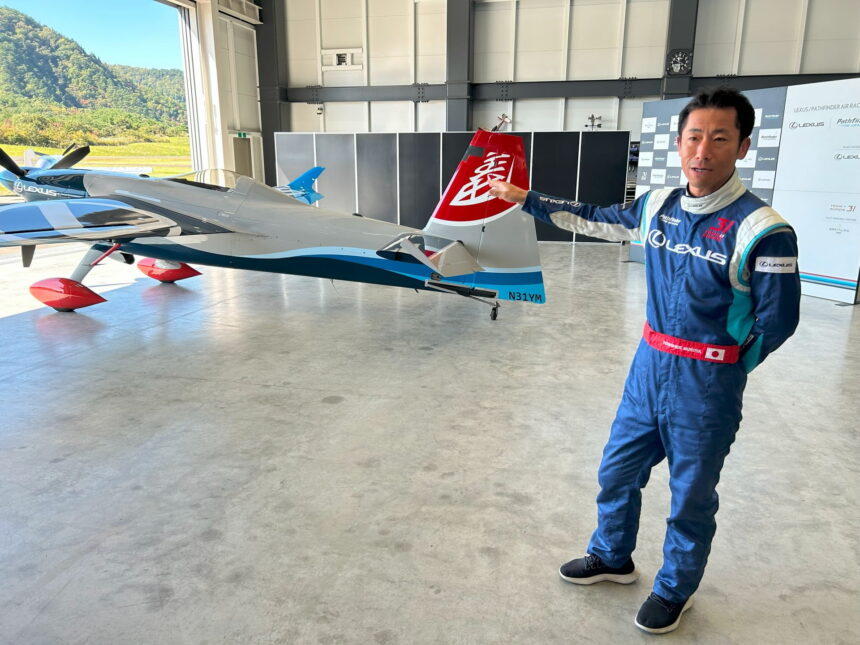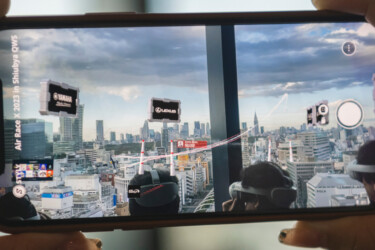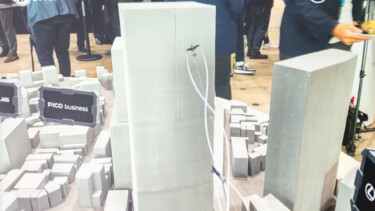Air Race X: AR Showcase Demonstrates Exciting Future for Sports Events
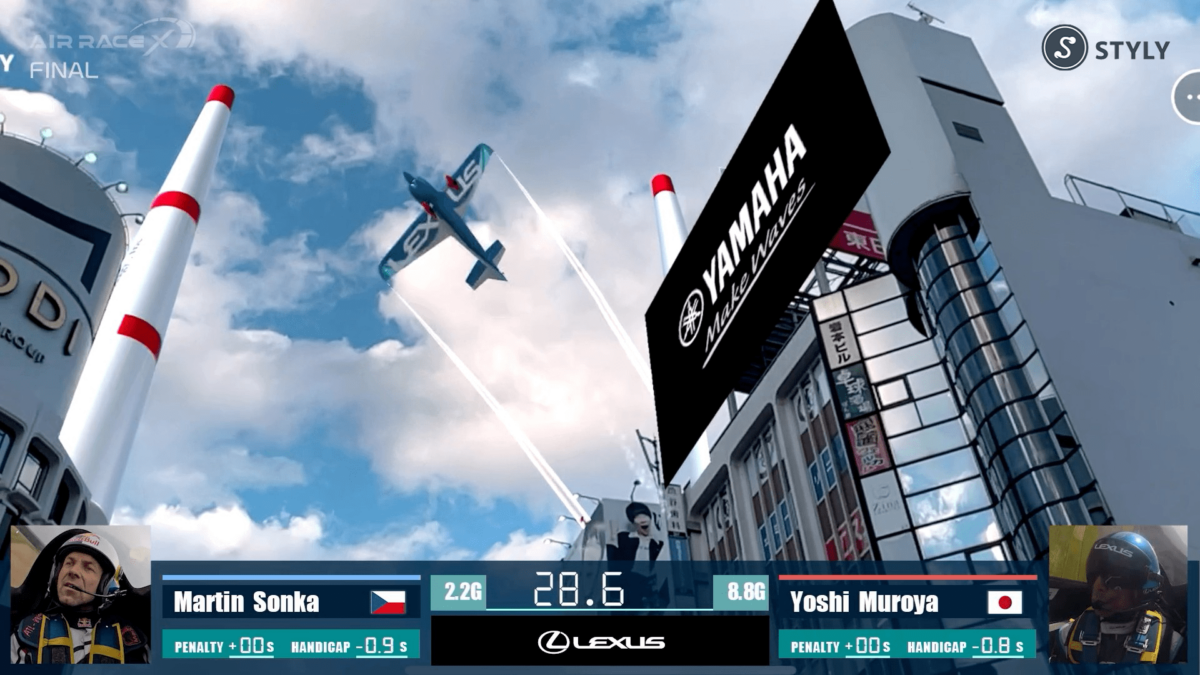
Red Bull Air Race, the motorsport air race that ended in 2019, is enjoying a revival – with augmented reality via Styly. I went to see the show in Japan.
The Red Bull Air Race was a series of air races in which pilots steered single-engine propeller planes through a course marked by 25-metre-high inflated pylons at speeds of up to 370 mph. The sport required concentration, extreme precision and, with g-forces of up to 12G, considerable physical fitness from the world's best pilots.
In May 2019, sponsor and organizer Red Bull pulled the plug on the race series due to lack of public interest and high costs. The logistics alone of transporting up to 14 pilots, aircraft, and equipment to each venue was a massive undertaking.
But the three pilots, Matt Hall (Australia), Yoshi Muroya (Japan) and Pete Mcleod (Canada), were not prepared to simply bury the series. They investigated how to revive air racing with less effort and, above all, by eliminating the monstrous logistics, with significantly less impact on the environment.
The result is Air Race X, with the final which took place on 15 October in Shibuya, Tokyo. How does it work, and who won the first race? I went to Japan and watched the final.
Content
This is Air Race X
In Air Race X, the pilots don't travel around the world with their planes and racing teams. Instead, they fly at their home bases. Local star Yoshi Muroya, for example, trains and flies at Fukushima Air Park.
The pilots also fly the qualifying rounds and the final at their home airports. The course, which is the same for every pilot, is set up digitally: The pilots only see the pylons based on position data.
Sensor technology is critical to the contest. Precise flight data measurement technology records all data in milliseconds, such as flight path, altitude, speed, G-forces and barometric pressure. This data is then sent to the competition center for processing.
This includes weather and environmental data, which is different for each pilot. Complex calculations are used to add time bonuses or penalties to the flight times to compensate for the advantages of individual pilots due to weather conditions.
Yoshi Muroya flies the Shibuya course at Fuskushima Air Park. | Video: MIXED
Over the course of six days, the pilots fly their qualifying and elimination rounds until only four teams remain. This year's final was contested by Matt Hall (Australia), Yoshi Muroya (Japan), Juan Velarde (Spain) and Martin Sonka (Czech Republic).
The special feature: Follow the air race in AR
A special feature of the race, and another reason for the precise data analysis, is that the air show can be watched as an augmented reality version via the Styly XR platform from Japanese metaverse studio Psychic VR Labs.
And not just anywhere, but right in the middle of Tokyo, between skyscrapers and directly above the famous Shibuya Crossing. Among other things, the app allows content to be tied to physical locations via spatial anchors.

I watched the finale of Air Race X at an event location in the Shibuya QWS building. | Image: MIXED
A quite big crowd gathers at various venues in Tokyo that Sunday to watch the race as it is compiled and recorded from the individual races and available data. I attended the final event with other journalists on the 15th floor of the Shibuya QWS skyscraper. The room was packed with Japanese press and TV covering the event, and VIPs wearing Pico-4 Enterprise glasses watching the race via the pass-through VR headset at the large windows.
Everyone else followed the AR race on smartphones and tablets, while sports commentators provided professional commentary on the pilots' actions. The digital planes roared overhead, the sound of the machines blaring from the venue's speakers in perfect sync with my position.
Smartphone AR vs. XR headset
From a technical perspective, the event worked perfectly. While the race was also shown on the monitors (check out the Youtube video), I followed the planes with my iPhone, which got annoying after a while.
I'm not a big fan of smartphone AR in general, although it's still delivering the best quality so far. Looking through a display window offers only a vague sense of immersion.
I would like to see such AR experiences with an XR headset instead. Unfortunately, I couldn't access the reserved Pico 4 headsets during the final. However, I had seen a demo earlier that day on a terrace on the 20th floor of another venue. While I usually experience outdated hardware being strapped to my head for VR and AR demos, Psychic was using the Quest 3, which had only been released five days earlier.
This demo was one of the highlights of my trip to Japan: Not only does the Quest 3's pass-through work great outdoors, but the AR experience of the digital planes chasing each other around the Shibuya course above Tokyo's skyscrapers was, at times, excellent.
Lack of occlusion kills immersion
However, the lack of occlusion is a real downer: when the planes passed me and flew behind the next skyscraper, I could still see them against the backdrop of the skyscraper, which destroyed immersion.
This was particularly noticeable at the event venue. As I stood behind the stage at the window watching the digital flight, I always had the room and its equipment in the background. The initial magic suffers greatly when the spatial experience of the location is lost to parts of the building, furniture and technical equipment in the viewport.
- This is what the Air Race X looks like when viewed through a smartphone from a good viewing angle.
- This is a very poor viewing angle through the smartphone – the occlusion destroys the illusion of an immersive XR race at this point.
After all, the thrill of a race like this is watching the planes circle the skyscrapers. At a Formula 1 race, no one complains when the cars speed past the spectators and then disappear around the next bend.
For me, merging the digital with the real means that the physical conditions must have a realistic effect. Without the realistic inclusion of these physical conditions, it doesn't matter where I watch the race. The great scenery is just an accessory anymore, not a necessary part of the show.
A partially open platform, like the one on the terrace earlier that day, and a track more suited to local conditions, as well as realistic occlusion, could perfect the experience. Psychiv VR Labs said that occlusion is possible with the Styly app, but that it was disabled for Air Race X due to technical reasons. In addition, parts of the race would no longer be visible to the audience.
But that would be crucial for a realistic experience, at least in my opinion.
Tabletop AR and the problem with Live events
Another interesting experience was the physical block model of Shibuya, on which I was also able to watch the planes flying via the Styly app. Again, the occlusion is lacking, but as a table-top fan, I see a lot of potential: with a realistic virtual city model, I could also watch such a race, air shows or other events (such as cycling races, Formula 1, etc.) in the comfort of my home on my living room table in full 3D.
- I could watch an Air Race X demo on this tabletop model from Shibuya by scanning the QR code with the Styly app.
- Watching an AR demo race on this table-top model of Shibuya via the Styly app on my smartphone was a highlight for me.
Another problem for me was that this was not live but a prerecorded event. The typical surprises and excitement of a real live competition were missing for me. All that remained was the promising technology and the prospect of future developments.
Air Race X: Not perfect, but an exciting look into the future
As an XR enthusiast, I find the effort and also the technical implementation within the current limitations impressive. There is a lot of hard work going on to exploit the potential of VR and AR and to validate metaverse concepts.
I'm a big fan of focused visions of the future, and Psychic VR Lab is already at an implementation stage that other platforms only dream of. This event also proves that the visions around XR in entertainment can have a future.

Full cyberpunk: VIP guests watch Air Race X with Pico 4 headsets at the 15th floor window of Shibuya QWS. | Image: MIXED
But there are still many unanswered questions: How to get enough viewers inside the show, how to monetize it and how to attract more sponsors to advertise on the digital billboards? How can the character of the competition be conveyed better in the future than through a simple recording? How can digital events be blended with reality in a way that maintains realism and credibility?
Many of the answers will likely lie in future technological developments. There is also still a lot of work to be done on further refinements of the content.
If the organizers have their way, Air Race X will become a regular event. In Japan, technological innovation and experimentation, even if imperfect, have a much higher priority than in the West, making the Land of the Rising Sun an ideal field for such experiments. With sufficient technical maturity, this niche sport may one day also attract a Western audience.
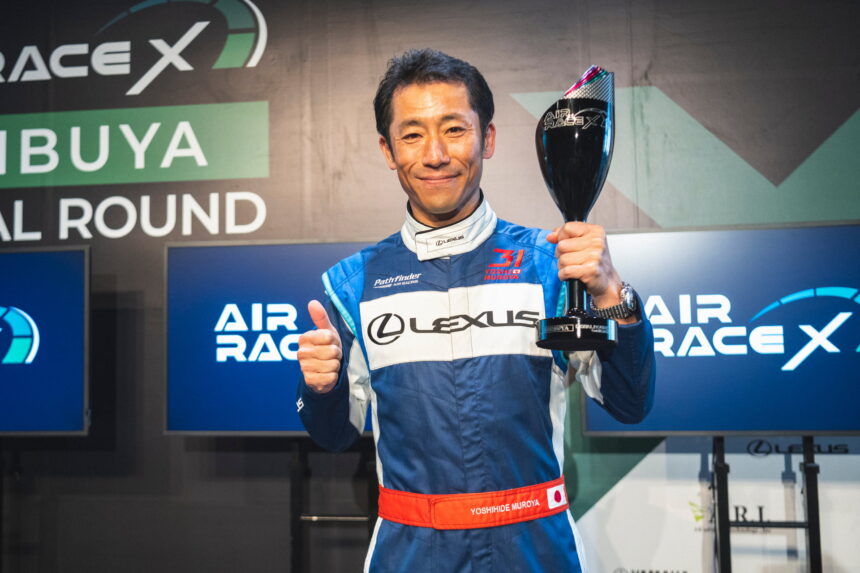
In Japan, Air Race X apparently found some appeal – and local hero Yoshi Muroya won the first event. | Image: Air Race X, Styly
The launch of Air Race X has been successful in my opinion and has shown an exciting vision for XR entertainment in the future. Everything now depends on how consistently the experience can be improved over the coming years, and whether enough supporters will continue to invest to keep this – or similar projects – moving forward.
Transparency note: Psychic VR Lab invited MIXED to a three-day media tour and covered the cost of travel, accommodation, and food.
Note: Links to online stores in articles can be so-called affiliate links. If you buy through this link, MIXED receives a commission from the provider. For you the price does not change.
